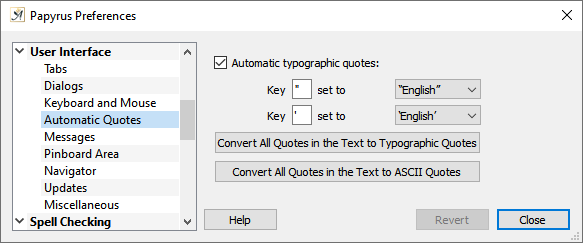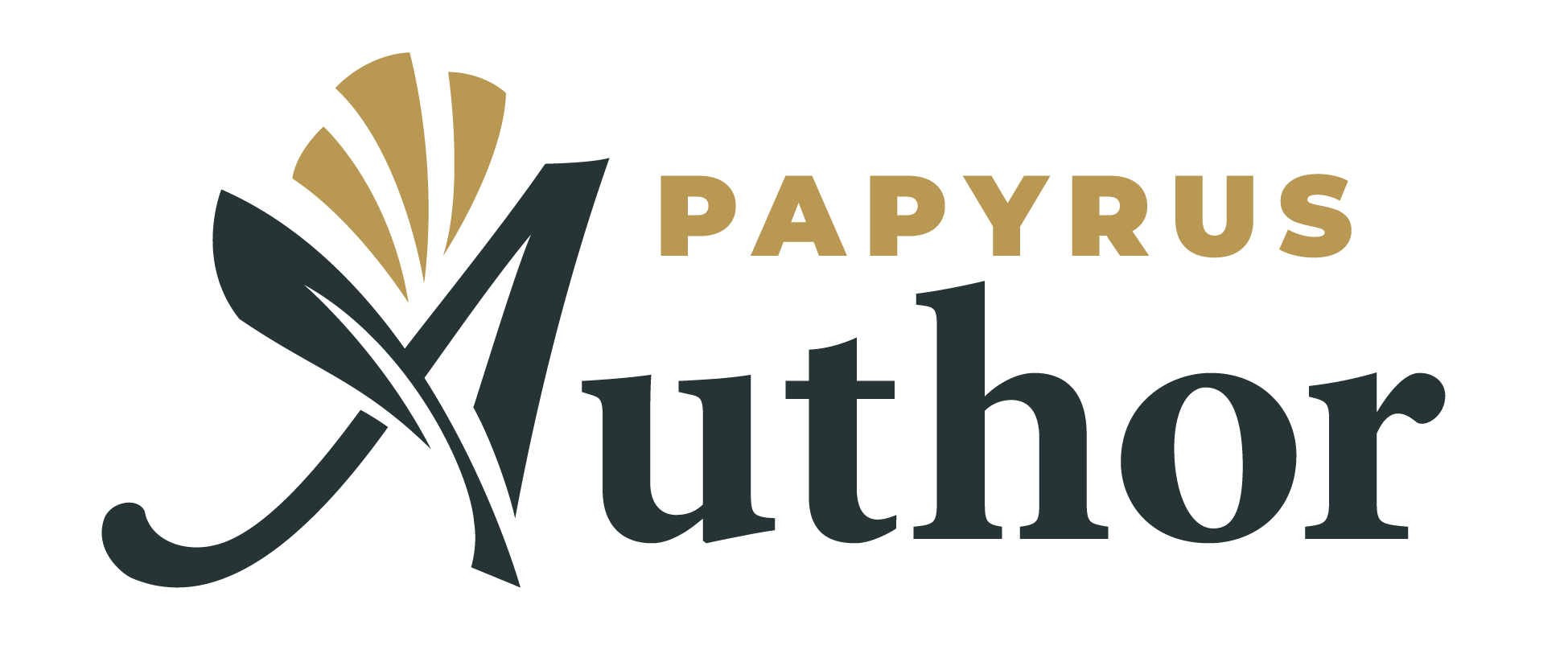
The Automatic Quotes dialog for quotation mark settings
With “ ![]() Automatic typographic quotes” in the “Automatic Quotes” dialog (“Preferences” → “User Interface” → “Automatic Quotes”) you can set which type of quotation marks you would like to appear when you type the quotation mark key.
Automatic typographic quotes” in the “Automatic Quotes” dialog (“Preferences” → “User Interface” → “Automatic Quotes”) you can set which type of quotation marks you would like to appear when you type the quotation mark key.
If you choose “normal” double quotation marks → ” ←, your quotes will appear as ASCII quotes in your text. You can also choose another type of quotation mark, such as the standard English quotes or even French quotes.
These quotes will only appear when you type a new word: the left quotation mark → “ ← will appear when you type a quotation mark after a space (where you would expect a word to start), and the right or closing quote, when you type a quote after a character (where you would expect a word to end). Use the drop-down menus to choose quotation styles for other languages.
The same goes for single quotation marks → ’ ←. If you change all quotes in your text to typographic quotes, an ASCII quotation mark between two letters will not be converted, as this is likely an apostrophe.
If you have chosen another type of single quotation mark here but would still like to use a normal apostrophe, you can insert one manually under the menu “Insert” by “Special Characters.”
You can also use a “text macro” to insert a variety of different quotation marks, regardless of the settings you have chosen here in the dialog.
You can switch between typographic and ASCII quotes in the menu “Edit” under “Special” as well. There are two choices to switch between typographic (All Quotes in Document/ Block → Typographic) and ASCII quotes (All Quotes in Document/ Block → Normal (ASCII).
